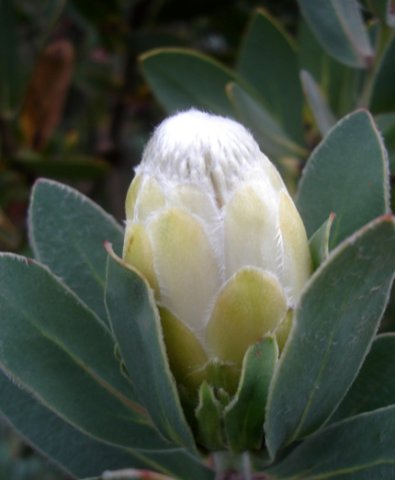Protea subvestita bud becoming flowerhead

Author: Ivan Lätti
Photographer: Judd Kirkel Welwitch
The cohering perianths of the Protea subvestita flowerhead in picture pushed the inner ring of involucral bracts apart in their elongation. The joint force exerted by such delicate florets represents quite a feat. But this is standard procedure in flowerhead development.
The outer rows of bracts are wider-based, more oval in shape than the taller and narrower inner ones. Upper parts of the flowerhead comprise the more overtly floral components. They are required to perform shorter term functions like giving and receiving pollen. Only one ring of bract tips surrounds this very floral and festive exchange.
Lower down, where the ovaries operate, is a different matter. Here it's all about fruiting. This is a slower process, happening later in flowerhead proceedings and lasting longer than pollination. It runs into a protracted storage function or service as well. Therefore, the multiple layers of bract bases surrounding the nether parts of the flowerhead present a better guarded, less penetrable and hopefully safer cover.
All is so functionally adapted for purpose here that an insurance company might one day adopt the analogy for their marketing (Manning, 2009; Coates Palgrave, 2002; Rebelo, 1995; Rourke, 1980; iNaturalist).

